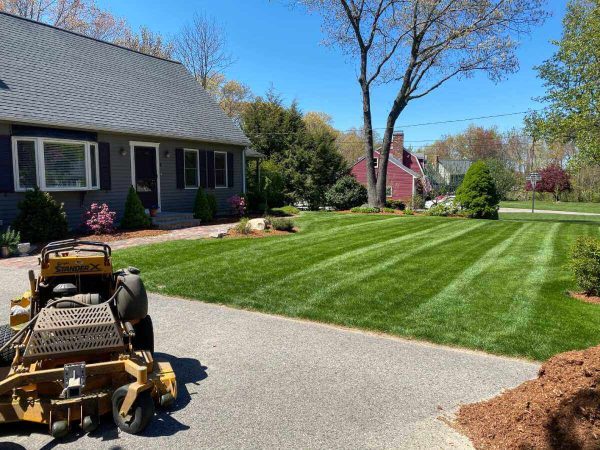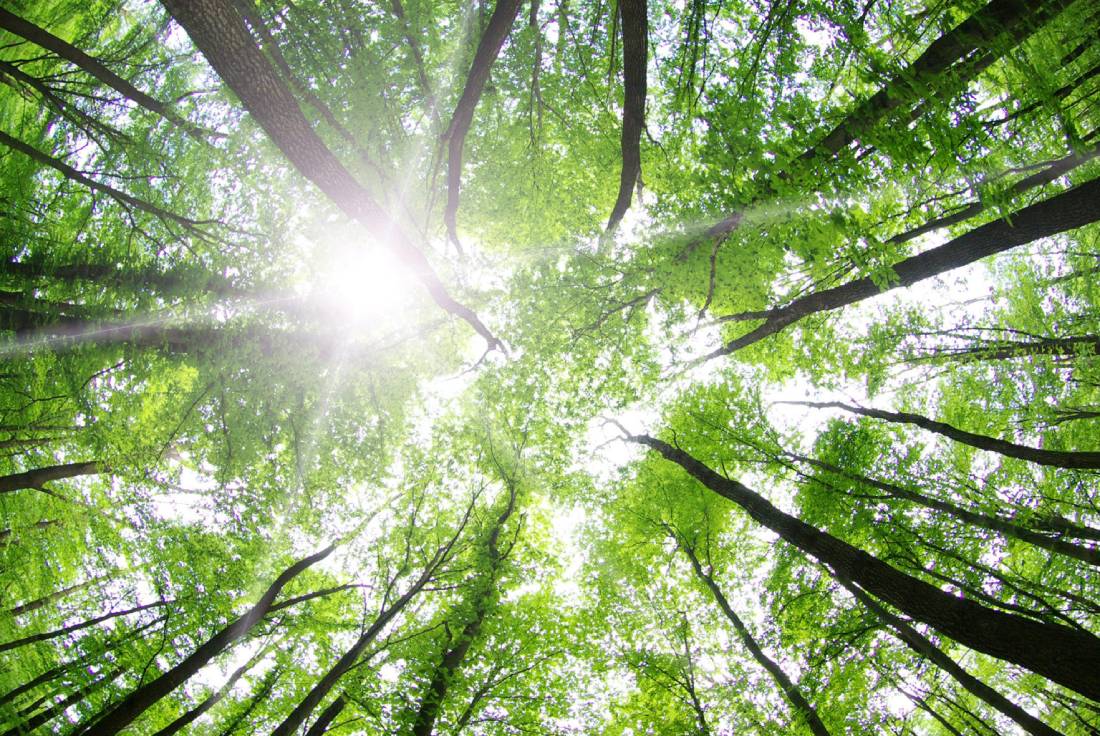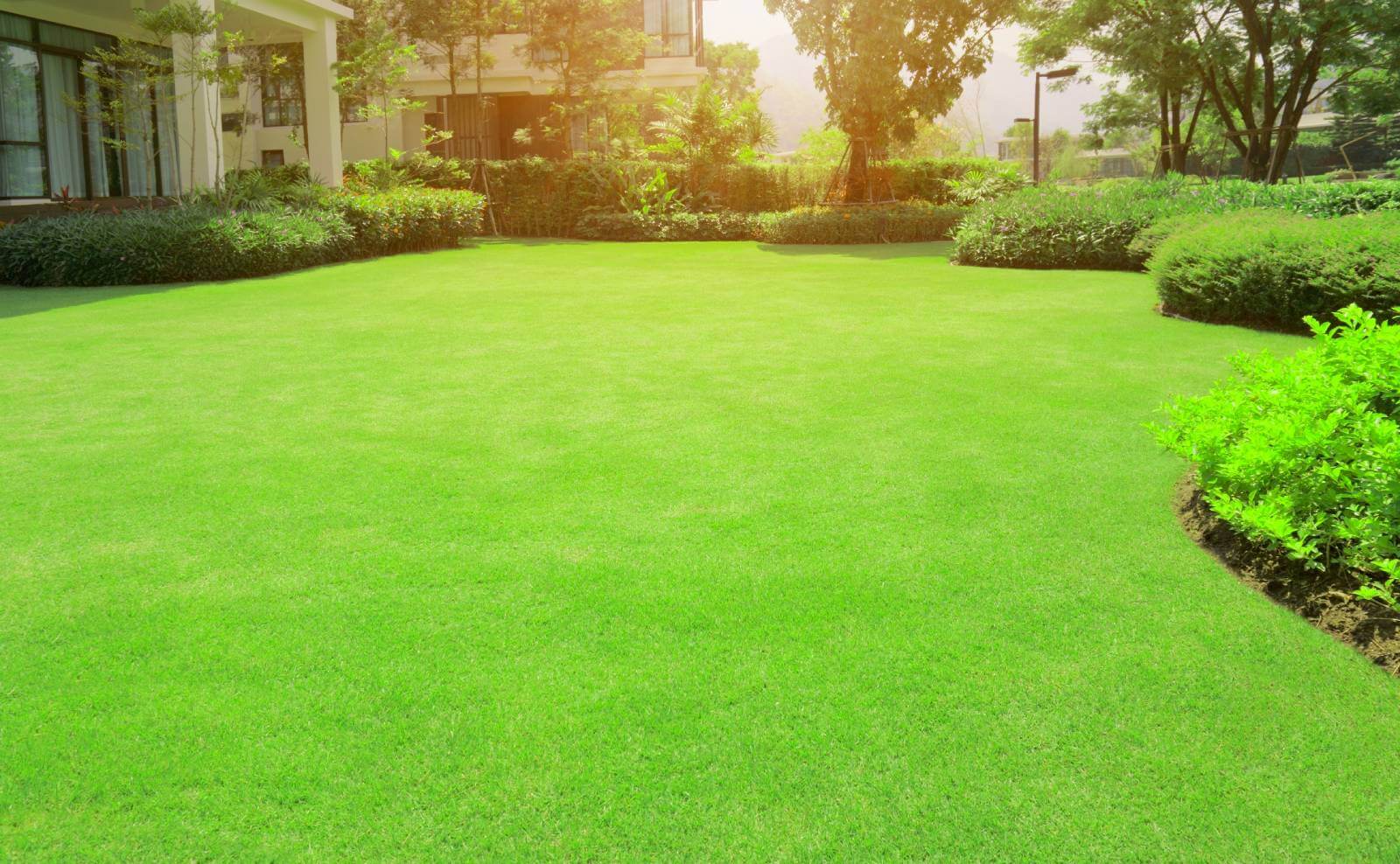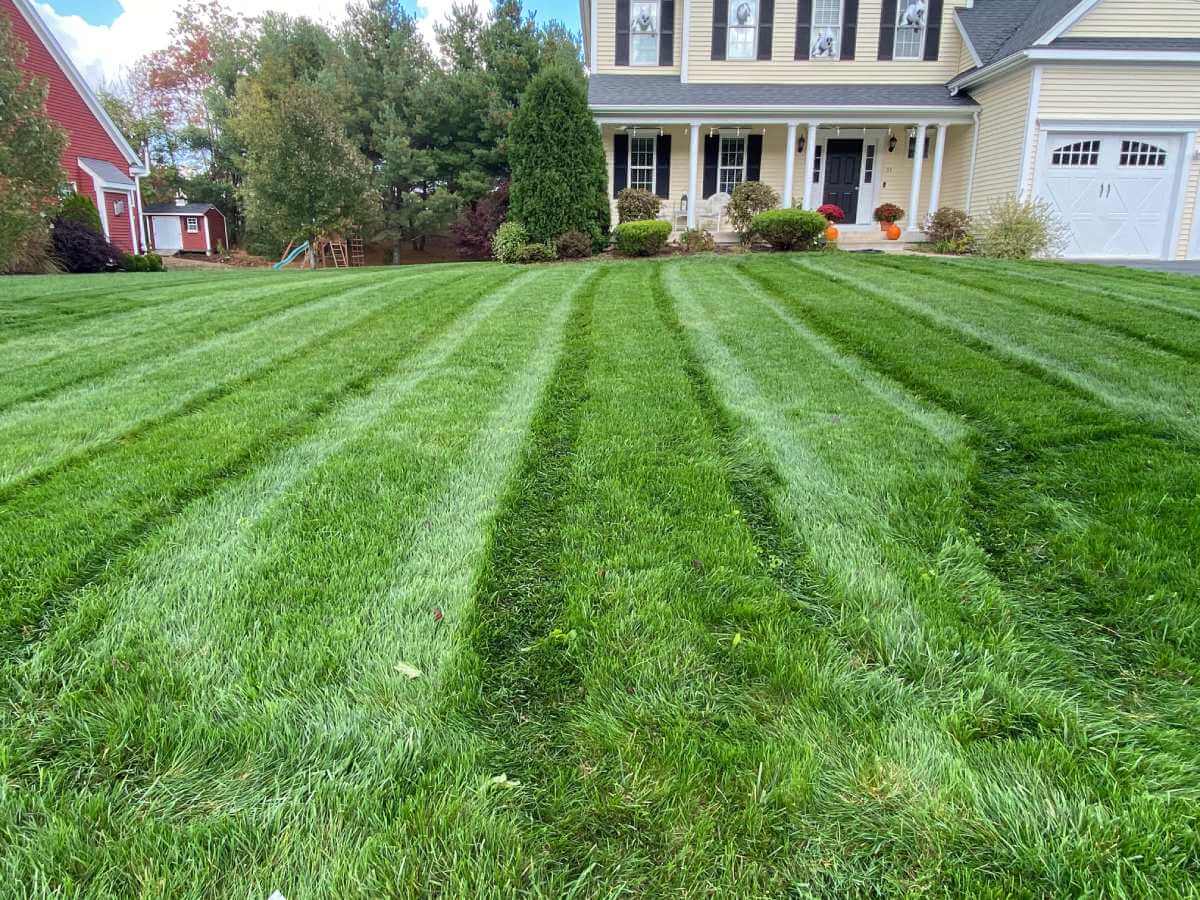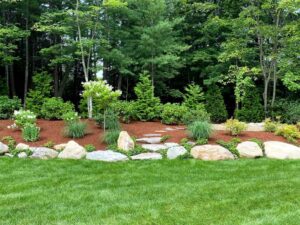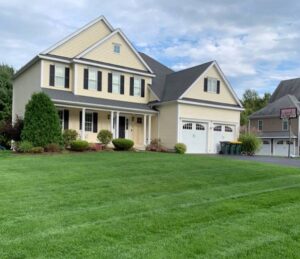1. Weed & Pest Control
Like most plants, weeds spread when they go to seed and wind, rain, and animals spread them around the area. That said, most plants don’t produce seeds until they become quite sizable, 5+ inches in a lot of cases. This is helpful to know because the recommended cut height for northern turf grasses is 3.5 – 4”. You will never prevent weeds entirely just by mowing, but if you can prevent them from spreading, you’ll have a much more contained problem on your hands. Spot treating the individual weeds or even hand pulling is attainable by keeping the problem localized.
2. Sunlight
As opposed to when the blades are all standing crisply at attention, when they lay over, it blocks the necessary sunlight from reaching everywhere it needs to get. If you’ve ever tackled an overgrown lawn, you’d probably have realized that once you got through the top layer, everything underneath was brown – that’s because it was starved for nutrients. Keep it short and the sun will find its way in.
3. Stress

4. Free Fertilizer
The circle of life is helping the grass grow in this case. Think about all of the money you may be spending on fertilizers for your lawn, well those eventually end up in the blade of grass. When you trim the tops of those blades (mow the lawn) and take them away, that’s like flushing money down the toilet. With all heavy duty mowers that landscapers use, as well as many homeowner mowers, the clippings are chopped so fine and dispersed so far (when side-discharging) the debris will filter right back down to the soil, decompose, and re-feed the lawn! Less work collecting the clippings AND free fertilizer – that’s a win-win.
5. Early response to issues
Another common problem that lawn care professionals see are invasive insects in the lawn. The UMass Amherst Extension Office has loads of information on the destruction caused by Chinch Bugs, Sod Web Worms, and Japanese Beetle grubs.The first signs we usually see when it comes to grubs are yellowing patches in the lawn, grass that pulls away from the soil
in large pieces with just a light rake or air from a leaf blower, and lots of birds digging in one particular spot in the lawn.
Now, these signs are pretty obvious to us as we are on all of our properties every week, however, for the average person who is not out inspecting their lawn every week, these pests can begin to take over very quickly and ruin an entire yard. So this point about the importance of mowing every week is more just about the time spent in the grass, and less about the actual cut. Just like in every other part of life, the more time you spend at something, the better it will turn out.
I know even after all of that there will still be some bi-weekly lovers out there, but these facts alone have been enough to change our philosophy at Maione Landscapes. We no longer offer bi-weekly service and feel that it is our obligation as lawn care professionals to help our clients to understand the importance. Don’t forget, lawn care isn’t just about cutting the grass .

